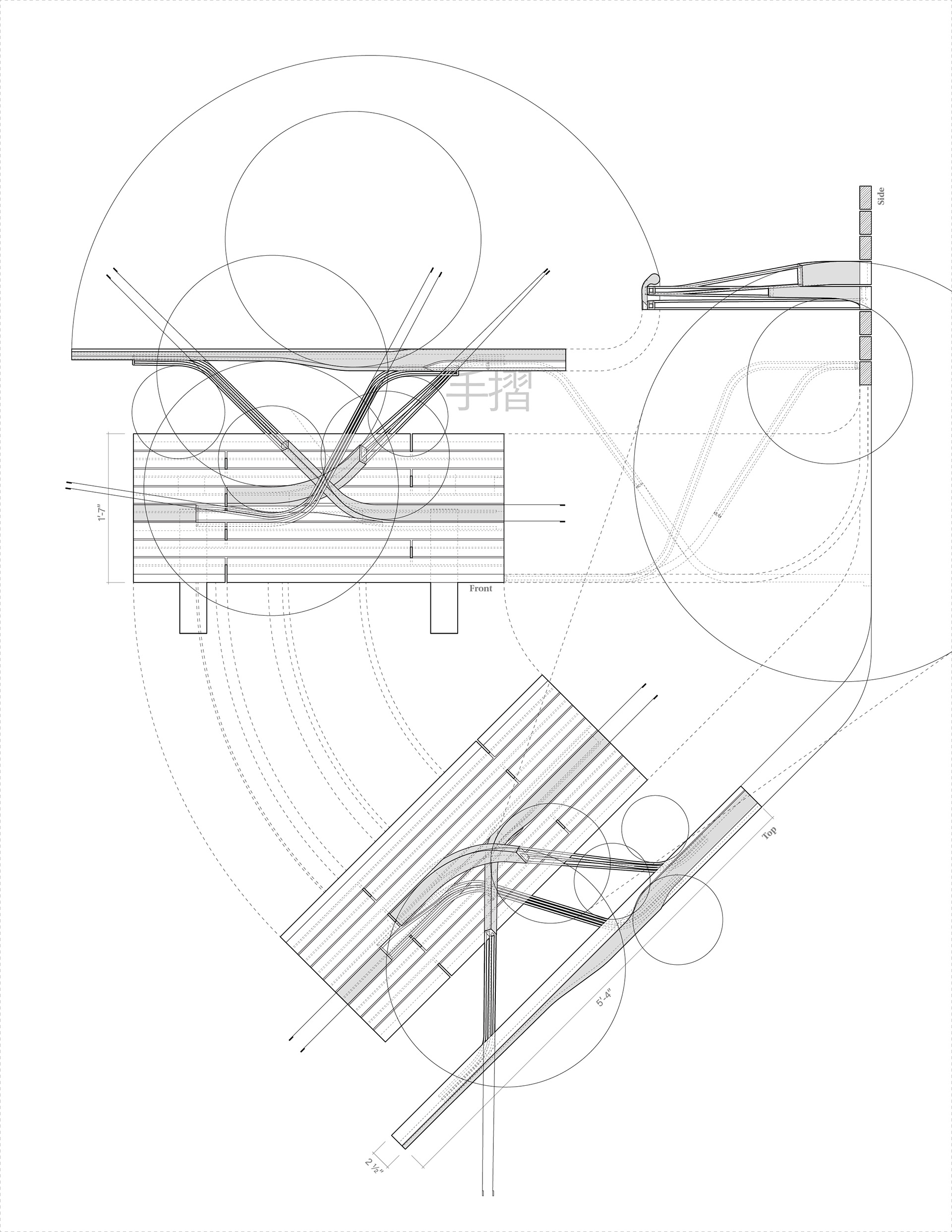DETAILS, DETAILS... Fall 2023
Situated in the context of the Yokohama port terminal, the railing detail accentuates and exaggerates the existing wooden deck geometry to develop a detail with its own autonomous language. The offset wooden board base, which sits forty-five degrees from the ground plane, serves as a geometric strata requiring an intervention to develop a language which compliments the rest of the project but develops agency in its expression.
To establish a new language which departs from the tectonic and material logics of the context, the handrail extension is created from a system of graphic instantiations. In ‘peeling’ the wooden boards upwards and [re]building them out of steel boxes and rods, the graphic quality of leading lines traces the once solid base up to a lighter expression. Sitting atop the newly constructed metal structure is a new wooden handrail, providing an interface between the user and detail. As a new centerpiece of the detail, the railing itself evokes a sense of curiosity as its full geometric ergonomics are not revealed until it is fully used.


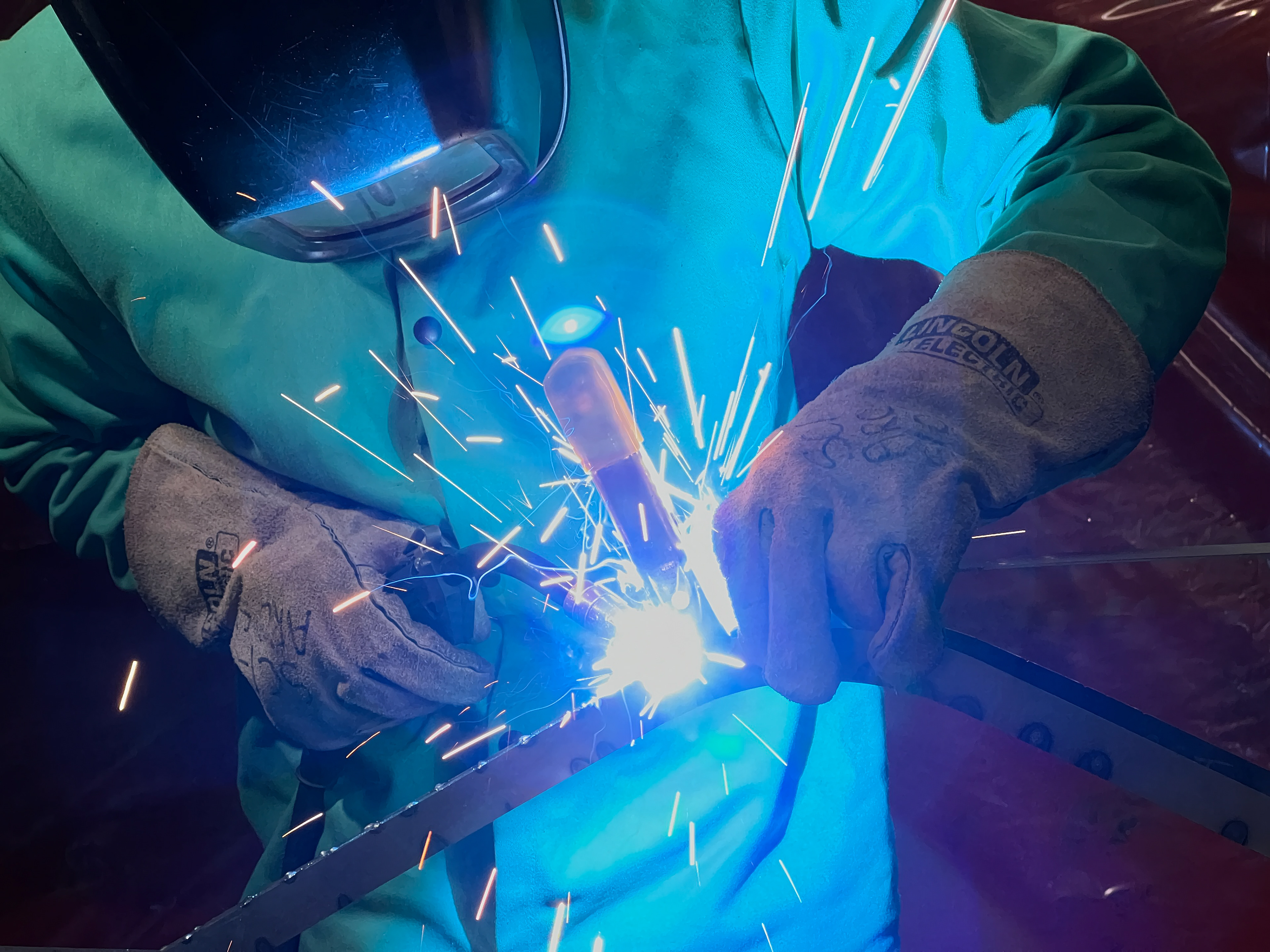

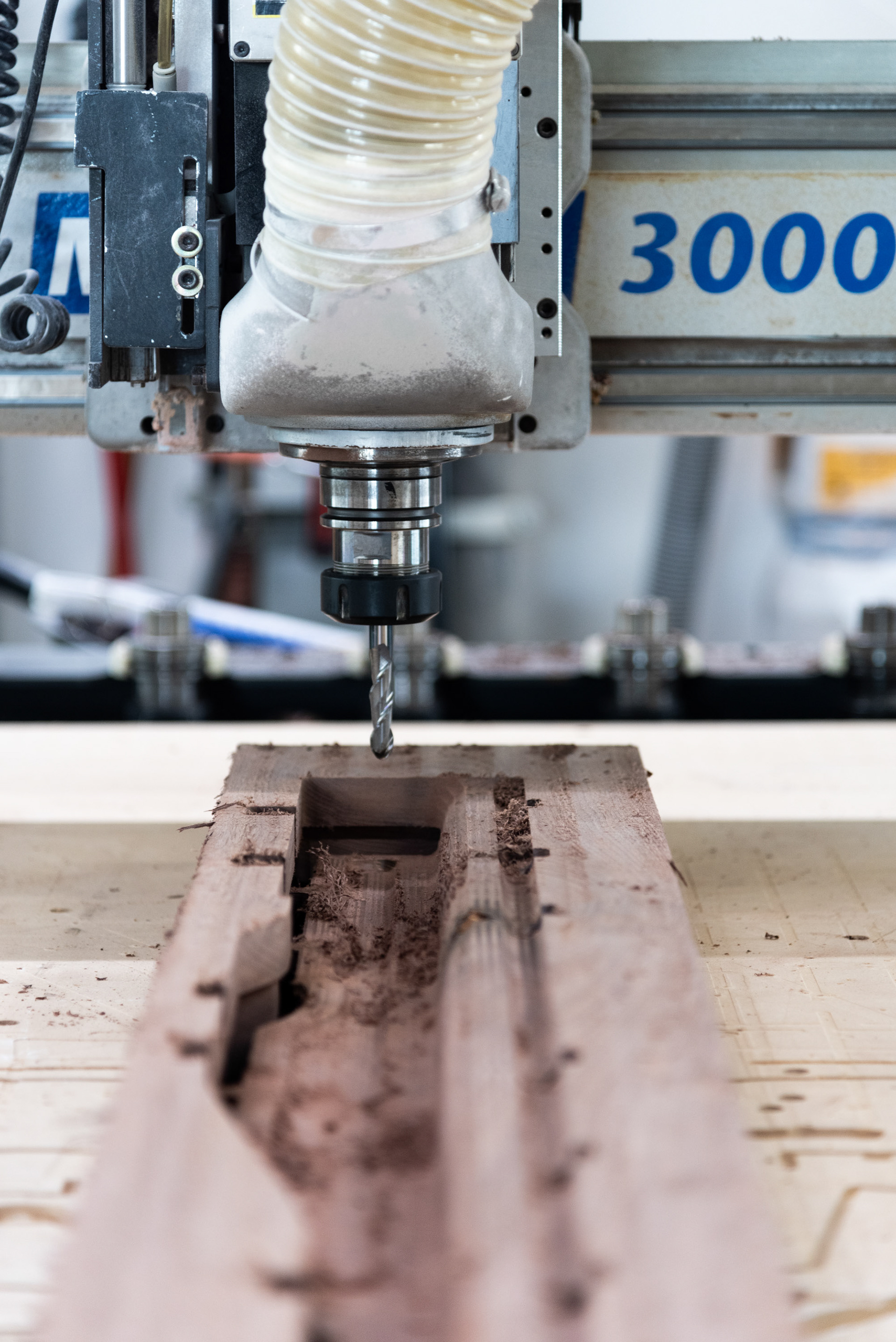
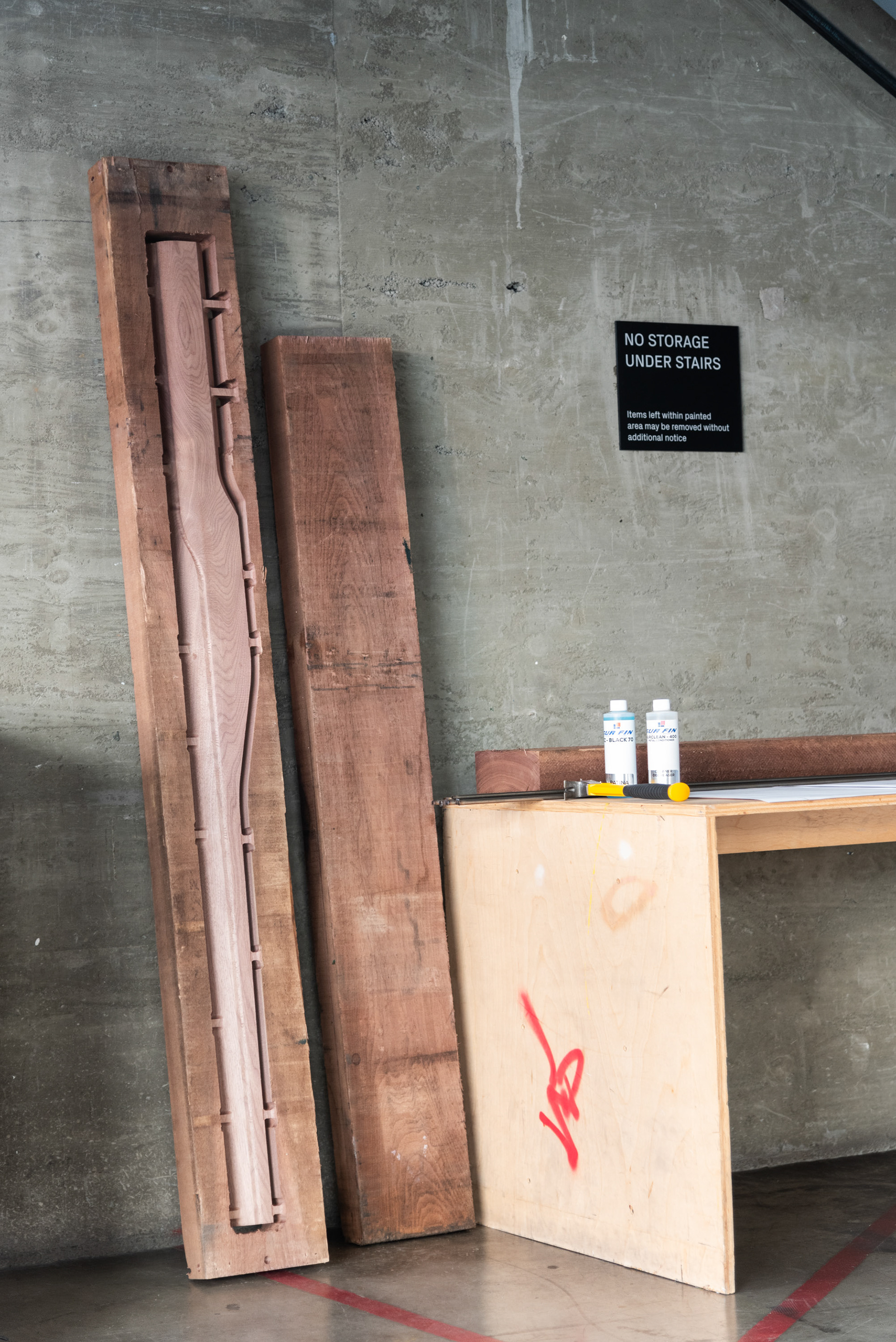
Material Selection
Material selection was key in the formation of the detail. The main design dialectic was formed between the desire for certain radial geometries and the properties of certain materials to achieve these bends.
The main metal bends are welded up 16-gauge cold rolled steel plates that form a hollow box. These plates were hand bent and tack welded to form the initial shape, then fully welded and ground down to create the look of a solid, bent extrusion. Steel rods (5/8” dia.) were then also bent by hand and welded to the ends of the boxes to receive the handrail and serve as a graphic continuation of the box itself.
Wood was also a main material choice, both in establishing the look of a polished, designed detail and furthering the project’s location in the port terminal. The base slats were made from 100+ year old reclaimed lumber while the handrail itself is machined walnut. This contrast makes the base feel sturdy and used while the railing itself invites interaction and has a different tactility.
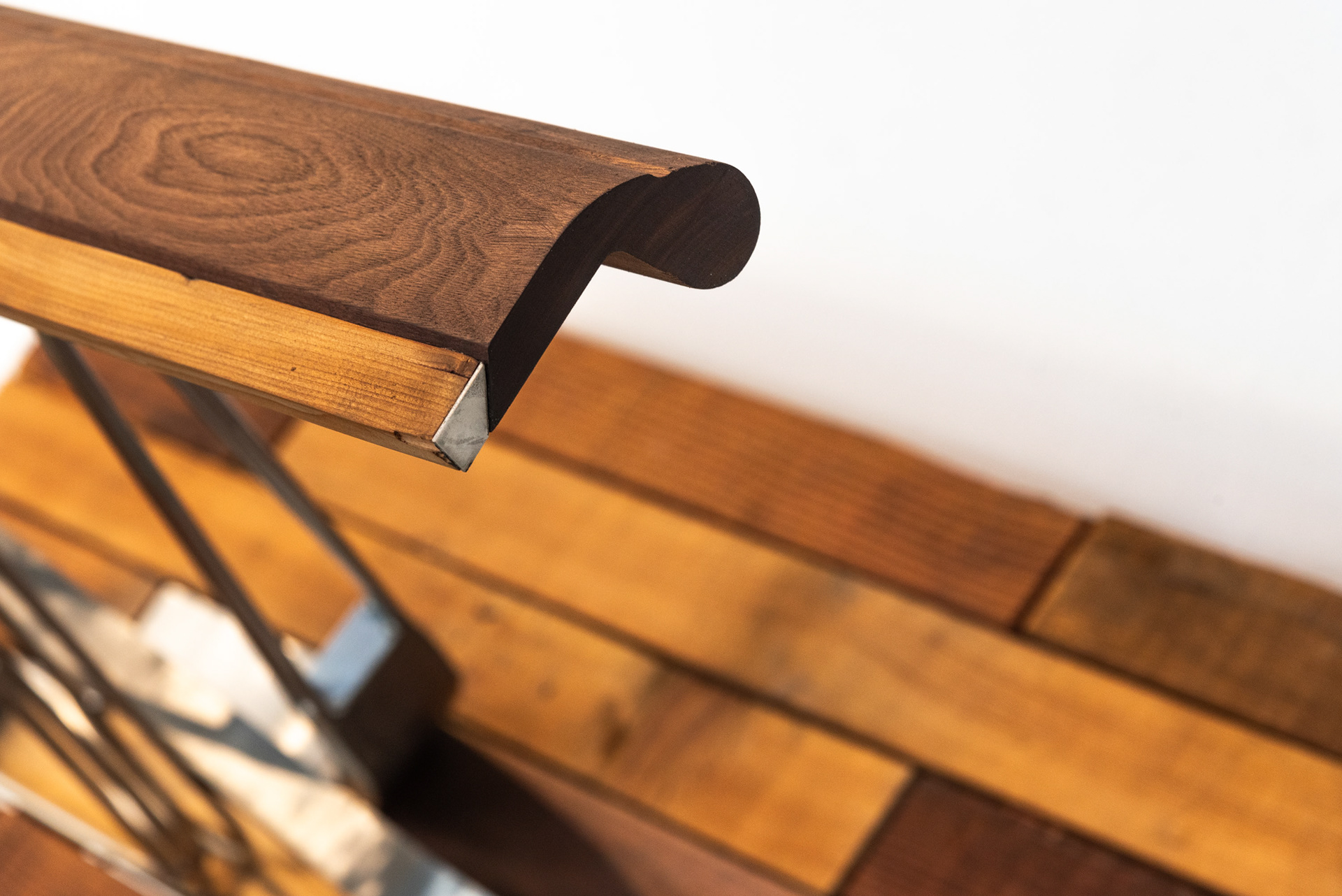

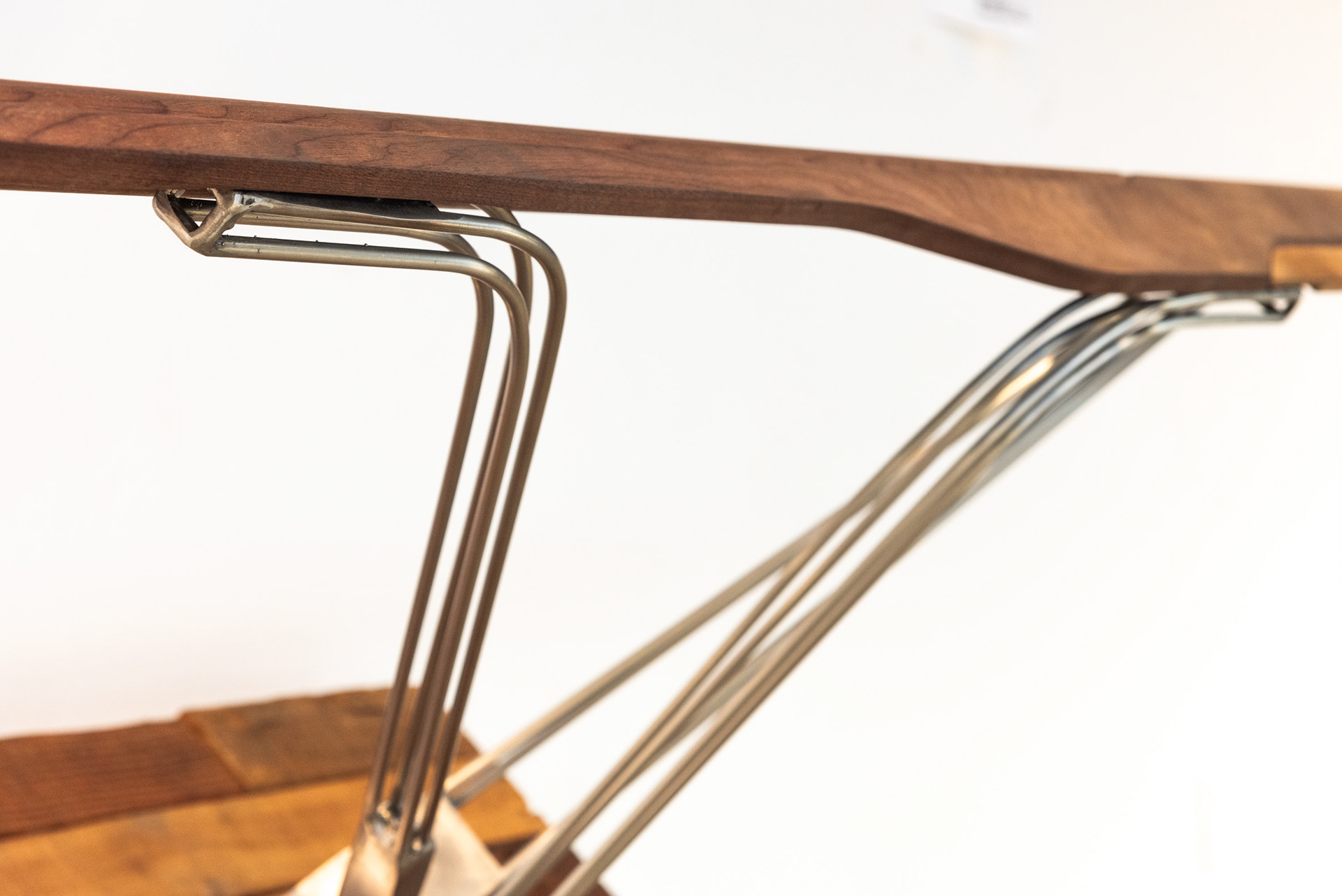
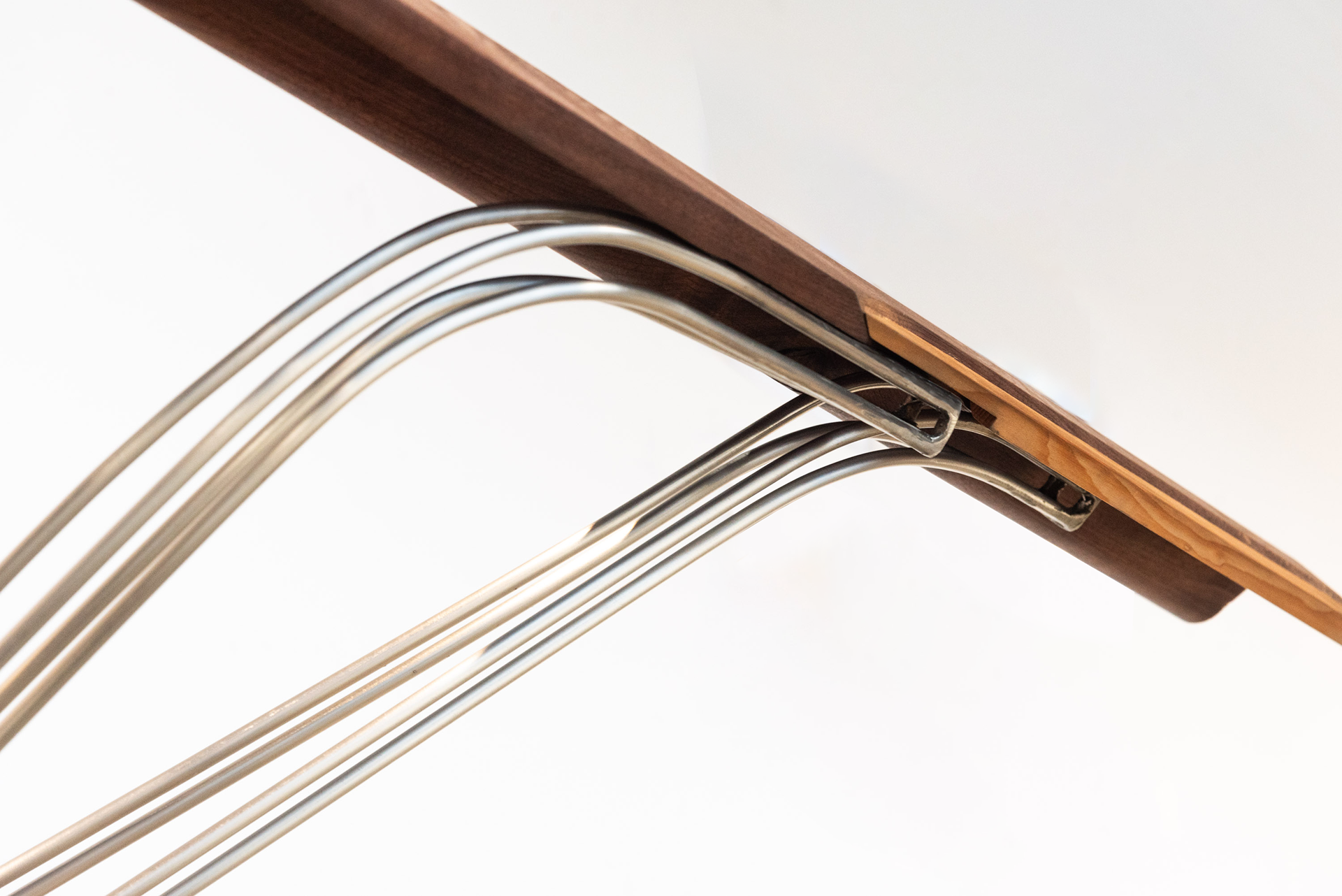
Graphic Instantiations
When explored graphically, the detail becomes a different type of architectural object. The expression of the railing was derived from a series of radii which formed depth and length of the railing itself.
These lines, explored as a series of graphics, were then translated to material thickness and bend ratios in order to determine how the detail is constructed. The traces formed the extension of the bounding box from the welded boxes, literally drawing the mass as a physical, steel line.

